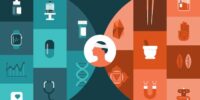Practical Statistics for Medical Research by Douglas G. Altman – Summary and Review

The book covers a wide range of topics including data analysis, study design, hypothesis testing, and interpreting results. Altman provides clear explanations and examples to help readers understand complex statistical methods and apply them in their own research projects. Overall, 'Practical Statistics for Medical Research' serves as an invaluable resource for healthcare professionals looking to enhance their understanding of statistics and improve the quality of their research studies.
Key Takeaways
- Understanding foundational statistical concepts crucial in medical research.
- Applying statistical methods to draw meaningful conclusions in studies.
- Ensuring validity by selecting appropriate tests and considering study design.
- Advancing medical practice through evidence-based decisions and improved patient outcomes.
Overview of Altman's 'Practical Statistics
In his seminal work 'Practical Statistics for Medical Research,' Altman astutely illuminates the fundamental principles essential for mastering statistical analysis in the medical field. Altman's book provides a thorough overview of statistical methods that are essential for conducting rigorous medical research. By emphasizing practical application over theoretical complexities, Altman equips readers with the necessary tools to analyze and interpret data effectively.
The overview presented by Altman encapsulates the essence of practical statistics, guiding researchers through the intricate process of data analysis with clarity and precision. Through real-world examples and insightful explanations, Altman demystifies statistical techniques, making them accessible to a wide audience. This approach empowers medical professionals to confidently apply statistical methods in their research endeavors, ultimately enhancing the quality and reliability of their findings.
Key Statistical Concepts Covered
The key statistical concepts covered in 'Practical Statistics for Medical Research' offer a thorough overview essential for researchers.
These concepts provide a foundation for the application of statistical methods in medical studies, enabling researchers to draw meaningful conclusions from their data.
The book enriches understanding by presenting practical examples that illustrate the relevance of these statistical principles in real-world research scenarios.
Statistical Concepts Overview
Covering the foundational principles of statistical analysis, this section explores key concepts essential for understanding medical research data. Statistical methods form the backbone of data analysis in medical research, enabling researchers to draw meaningful conclusions from their studies.
Understanding the principles of statistical methods allows researchers to make informed decisions regarding study design, sample size determination, and data interpretation. Concepts such as hypothesis testing, confidence intervals, and regression analysis play a vital role in analyzing the relationships between variables and evaluating the significance of results.
Application in Research
Exploring the practical application of key statistical concepts in medical research enhances researchers' ability to draw meaningful conclusions and make informed decisions in study design and data interpretation. Applying statistical methods in research offers valuable insights but also presents challenges.
Researchers must carefully select the appropriate statistical tests based on the research question and data characteristics to guarantee the validity and reliability of their findings. Understanding the limitations and assumptions of statistical techniques is vital in interpreting results accurately. Additionally, researchers need to take into account the sample size, study design, and potential biases when applying statistical methods.
Practical Examples Given
Within the domain of medical research, practical examples that illustrate key statistical concepts play a pivotal role in elucidating complex methodologies and fostering a deeper understanding of data analysis techniques.
Real-world examples provide researchers with tangible scenarios where statistical methods are applied, allowing for a hands-on practice that transcends theoretical knowledge.
By delving into these practical illustrations, researchers can grasp the intricacies of statistical analyses, such as hypothesis testing or regression models, in a more engaging and comprehensible manner.
Through the exploration of diverse case studies encompassing various medical research domains, individuals can enhance their statistical literacy and decision-making abilities.
Ultimately, the incorporation of practical examples in statistical education empowers researchers to navigate the complexities of data analysis with confidence and proficiency.
Importance in Medical Research
In the domain of medical research, the application of practical statistics serves as a crucial tool for uncovering meaningful insights and correlations within complex datasets. When delving into the field of medical research, the significance of statistics can't be overstated. Here's why:
- Data Analysis: Statistics allow researchers to analyze vast amounts of data efficiently, identifying patterns and trends that may not be apparent at first glance.
- Research Design: Proper statistical techniques aid in designing studies that are methodologically sound, ensuring results are reliable and conclusions are valid.
- Insightful Interpretation: Statistics help in drawing accurate conclusions from research findings, providing valuable insights that can influence medical practices and policies.
- Decision Making: Statistical analysis assists in making informed decisions based on evidence, guiding healthcare professionals towards effective treatments and interventions.
Essentially, statistics form the backbone of medical research, enabling researchers to navigate the complexities of data, design robust studies, interpret results accurately, and make impactful decisions for the betterment of healthcare.
User-Friendly Statistical Explanations
Crafting user-friendly statistical explanations demands the art of simplifying intricate concepts while maintaining precision and depth. This approach guarantees that a diverse readership can easily grasp and engage with the material. By breaking down complex statistical jargon into clear and accessible language, researchers can enhance the understanding of their audience. This simplification process involves using relatable examples, analogies, and visuals to elucidate statistical software and data analysis techniques effectively.
In the domain of medical research, where statistical analysis plays a pivotal role, presenting information in a user-friendly manner is paramount. Researchers must strike a balance between accuracy and accessibility to foster comprehension among peers, patients, and policymakers. Utilizing plain language and straightforward explanations can demystify statistical concepts, making them more approachable and applicable in various research settings. Embracing user-friendly statistical explanations not only promotes transparency but also encourages collaboration and knowledge-sharing within the scientific community.
Practical Applications in Research
Embracing practical applications in medical research enhances the relevance and impact of statistical findings on healthcare advancements and patient outcomes. When it comes to clinical trials and data analysis, researchers play an essential role in shaping the future of medicine. Here are some key points to ponder:
- Real-world Impact: Applying statistical methods in clinical trials helps identify effective treatments, ultimately improving patient care and outcomes.
- Precision Medicine: Data analysis allows for personalized treatment approaches, tailoring healthcare interventions based on individual characteristics and needs.
- Innovative Research: Researchers use statistical tools to uncover new trends, associations, and insights, driving innovation in the medical field.
- Evidence-Based Practice: By analyzing data from clinical trials, healthcare professionals can make informed decisions, leading to evidence-based practices that benefit patients.
Incorporating practical applications of statistics in medical research not only enhances the quality of evidence but also paves the way for advancements that can transform healthcare delivery and patient experiences.
Critique and Limitations Discussed
Practical statistics in medical research reveal not only the potential for advancements but also the necessity to carefully critique and address limitations in data analysis.
It's essential to acknowledge that every study has its constraints and imperfections. In 'Practical Statistics for Medical Research,' the author emphasizes the significance of critically evaluating the methods and results to guarantee the reliability and validity of the findings.
Impact on Medical Professionals
The impact of practical statistics on medical professionals can't be overstated, shaping their decision-making processes and enhancing patient care outcomes. Statistics play a vital role in professional development and clinical practice for medical practitioners. Here are some key ways in which practical statistics influence medical professionals:
- Informed Decision-Making: Statistics provide medical professionals with the tools to analyze data effectively, leading to informed decisions in patient care.
- Outcome Evaluation: Through statistical analysis, medical professionals can assess the effectiveness of different treatments and interventions, ultimately improving patient outcomes.
- Research Advancement: Understanding statistics is essential for conducting high-quality research, contributing to the advancement of medical knowledge and practices.
- Risk Assessment: Statistical methods help medical professionals assess and communicate risks to patients, enabling better-informed healthcare decisions.
Incorporating practical statistics into their practice empowers medical professionals to deliver evidence-based care, fostering continuous learning and improvement in the medical field.
Recommendations for Further Reading
Exploring additional statistical resources and delving into advanced research methodologies can greatly enhance one's understanding of medical statistics.
By immersing oneself in these recommended readings, medical professionals can broaden their knowledge and sharpen their analytical skills.
Embracing these resources will unquestionably empower researchers to navigate the complexities of medical statistics with confidence and precision.
Additional Statistical Resources
For those seeking to deepen their understanding of statistics in medical research, exploring additional statistical resources can provide valuable insights and enhance their analytical skills. Here are some recommended resources to further immerse into statistical software and data analysis:
- *'An Introduction to Statistical Learning with Applications in R'* by Gareth James, Daniela Witten, Trevor Hastie, and Robert Tibshirani
- *'Practical Data Science with R'* by Nina Zumel and John Mount
- *'Biostatistics: A Foundation for Analysis in the Health Sciences'* by Wayne W. Daniel and Chad L. Cross
- *'Statistics in Medicine'* by Robert G. Newcombe
These resources offer a thorough look at statistical methodologies, enhancing the reader's ability to conduct sound data analysis in medical research.
Advanced Research Methodologies
Delving into advanced research methodologies reveals a domain of sophistication and depth important for expanding one's scientific repertoire. Understanding research design and data analysis at a nuanced level is essential for conducting high-quality research. For further exploration, individuals can consider the following recommendations:
| Research Design | Data Analysis |
|---|---|
| Experimental Studies | Statistical Modeling |
| Observational Studies | Machine Learning Techniques |
| Qualitative Research | Big Data Analytics |
Frequently Asked Questions
How Does 'Practical Statistics for Medical Research' Address the Issue of Bias in Medical Research Studies?
In addressing biases, "Practical Statistics for Medical Research" explores how data interpretation impacts study outcomes. It enlightens readers on recognizing and mitigating biases in medical research, fostering a deeper understanding of statistical analysis to enhance scientific rigor.
Can Altman's Book Be Used as a Guide for Conducting Meta-Analyses in Medical Research?
While Altman's book provides valuable meta-analysis guidance, it may have limitations due to evolving methodologies. Data interpretation in meta-analyses poses challenges like heterogeneity. Users should approach its teachings critically, acknowledging the complexities of this statistical endeavor.
Does Altman Provide Practical Tips for Dealing With Missing Data in Statistical Analyses?
Altman's book offers insightful strategies for dealing with missing data in statistical analyses. It provides practical tips that can aid researchers in addressing this common challenge, enhancing the quality and reliability of their results.
How Does Altman Discuss the Role of Power Analysis in Study Design and Interpretation of Results?
In study design, Altman emphasizes the critical role of power analysis. By evaluating sample size needed to detect meaningful effects, researchers enhance study validity. Understanding power guarantees that studies have the ability to detect real effects and avoid false conclusions.
Are There Any Specific Case Studies or Real-World Examples Included in the Book to Illustrate Statistical Concepts in Medical Research?
The book uses case studies and real-world examples to vividly illustrate statistical concepts in medical research, fostering a deeper understanding for readers. These practical applications enhance comprehension and demonstrate the relevance of statistics in this field.











